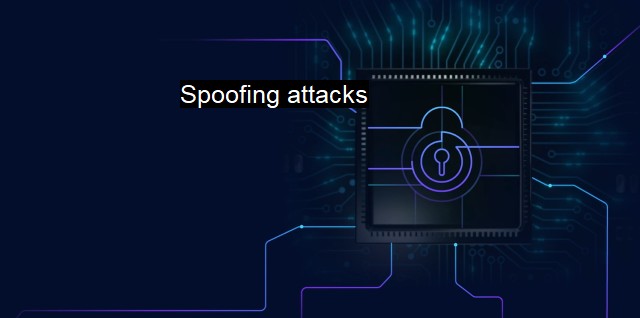What are Spoofing attacks?
Unmasking the Threat of Spoofing Attacks: Understanding the Tactics and Defending Against Cybercrime's Evolution
A "spoofing attack" is a malicious act in which a third party constructs network data to appear as if it originates from a trusted source. This encompasses a broad spectrum of scenarios and vulnerabilities that cybercriminals may manipulate, covering IP, Email, DNS, ARP, Web, and other spoofing techniques.A spoofing attack is a significant security challenge in today's interconnected world. The purpose of a spoofing attack often involves tricking a system or individual into revealing sensitive information, bypass security systems, or enable a Man-in-the-Middle strategy. They differ from other attacks due to its deceptive, disguised nature which makes them hard to identify and even more challenging to prevent.
IP spoofing involves altering the packet characteristics to pretend network data is coming from another IP address. The attacker uses packets to make them appear as they were created by a different machine. Here, the hacker masquerades as a trusted host to hide his identity, or leverage illicit rights or route unauthorised commands, gaining unwanted access to sensitive data and systems.
Email spoofing is another common technique, often used in phishing attempts. This kind of attack involves sending emails with a forged sender address, which is done with the intent of tricking the recipient into trusting the contents of the email. Emails could contain links to malicious or fraudulent websites that trick you into providing sensitive data such as financial or personal information.
DNS spoofing is a type of hacking where corrupt DNS data directs an online search for a URL to a fraudulent website masquerading as the genuine one. This causes users to land on counterfeit websites without realizing it, potentially giving their sensitive data to phishing schemes or downloading malicious software unknowingly.
ARP spoofing is another form where an attacker sends falsified ARP messages over a local area network to link their MAC address with the IP address of a legitimate user on the network. This type of attack allows the perpetrator to intercept, modify or steal data in transit.
Web spoofing, on the other hand, involves copying the website design of another, reputable site and using it as a lure. Unsuspecting visitors may think they are on a trusted site and can enter sensitive information that is then accessible to the attacker.
In terms of stemming the tide of these attacks, being securely conscious can be the most effective defense. Cybersecurity and antivirus software play an essential role in mitigating the effects of spoofing attacks. They are designed to detect anomalies automatically and in real-time across many different attack vectors and alert the user accordingly. Even Identities can be controlled and managed uniquely via Identity management tools that go beyond usernames and passwords and use fingerprint or facial recognition.
Longevity lies in having distinct protocols to ward off such cyber-attacks, imposing rules such as robust encrypted authentication and stringent cyber-security best practices. Education and awareness are critical since machines themselves can’t intuit the subtle markings of duplicitous websites, emails, or cyber-attacks. Therefore, training your brain to spot and respond correctly to threats is vital.
To provide a conclusive understanding, a spoofing attack is a significant threat to your privacy and security online. It relies on the less wholesome aspect of our connected world by imitating trustworthy contacts or infrastructure. encryption, continual vigilance, cybersecurity software, practical cyber hygiene and taking advantage of the tools at our disposal can significantly reduce spoofing attack risks to maintain a safer cyber environment.

Spoofing attacks FAQs
What is a spoofing attack in cybersecurity?
A spoofing attack is a type of cybersecurity attack where cybercriminals impersonate legitimate entities to gain unauthorized access to sensitive data or systems.How do spoofing attacks happen?
Spoofing attacks happen when cybercriminals manipulate data packets to make it look like the data is coming from a trusted source. They can also use fake emails, websites, or caller IDs to trick victims into providing sensitive information.What are the types of spoofing attacks?
There are several types of spoofing attacks, including email spoofing, IP spoofing, DNS spoofing, and caller ID spoofing.How can I protect myself from spoofing attacks?
To protect yourself from spoofing attacks, you must use strong passwords, never click on links or download attachments from unknown sources, and regularly update your antivirus software. You can also enable two-factor authentication and use encrypted connections to secure your online transactions.| | A | | | B | | | C | | | D | | | E | | | F | | | G | | | H | | | I | | | J | | | K | | | L | | | M | |
| | N | | | O | | | P | | | Q | | | R | | | S | | | T | | | U | | | V | | | W | | | X | | | Y | | | Z | |
| | 1 | | | 2 | | | 3 | | | 4 | | | 7 | | | 8 | | |||||||